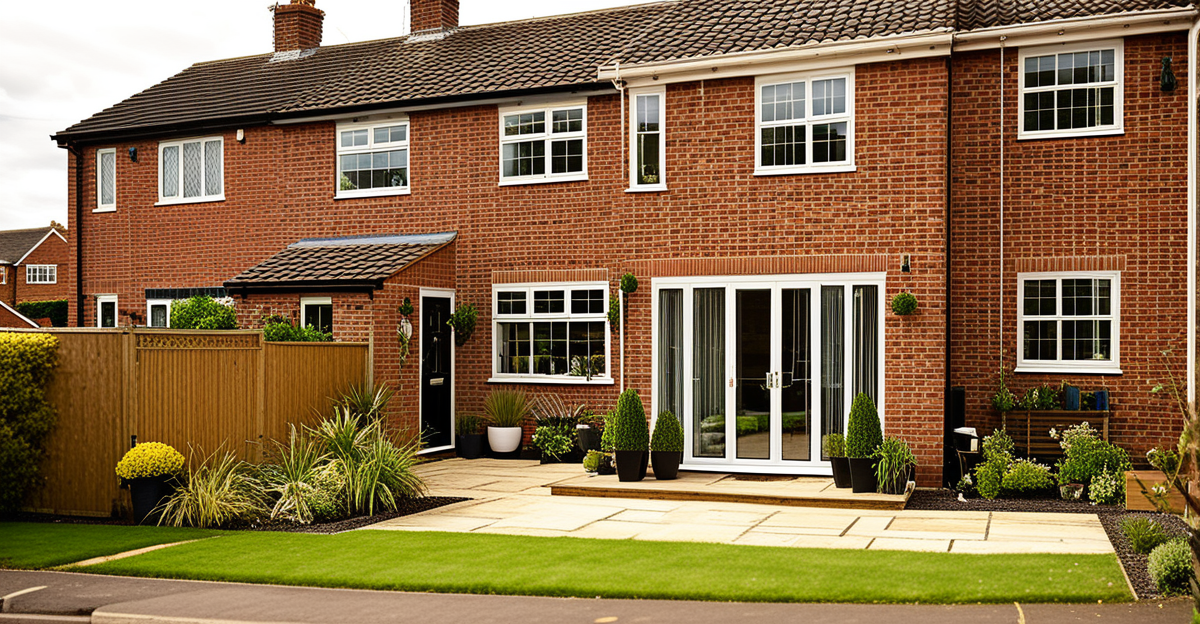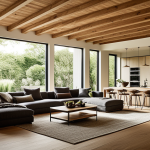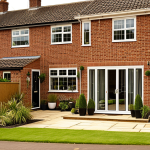Meeting the Demands of Remote Work in UK Homes
Remote work has transformed the way UK households use their living spaces. With more people working from home, flexible home design has become essential. Adapting existing rooms into functional home offices or multi-functional workspaces helps balance professional and personal life efficiently.
Creating a productive home office begins with selecting quiet, well-lit areas free from distractions. Ergonomic furniture and clutter-free setups also enhance focus and comfort. Incorporating storage solutions for work materials keeps the space organised, supporting sustained productivity.
Also to see : How can sustainable home decor enhance your living space?
Many UK homes showcase remote work adaptations by converting spare bedrooms or dining areas into dedicated work zones. For families juggling multiple remote workers and children’s activities, multi-purpose rooms with movable partitions or fold-away desks provide practical solutions.
Best practices for remote work environments emphasize better air circulation, natural light, and reliable internet connectivity—crucial for uninterrupted virtual meetings. These deliberate adjustments not only improve work output but also help maintain boundaries between work and home life, supporting mental well-being.
In the same genre : How can you maximize natural light in UK living spaces?
In summary, remote work, flexible home design, and thoughtful home office solutions are becoming fundamental to modern UK homes, responding directly to evolving lifestyle demands.
Integrating Sustainability and Eco-Friendly Innovations
Embracing sustainable living in UK homes means prioritising energy-efficient home upgrades that reduce environmental impact and lower utility bills. Upgrading to double-glazed windows, installing LED lighting, and using smart thermostats are practical steps that align closely with eco-friendly home standards. These upgrades not only conserve energy but increase comfort by maintaining consistent indoor temperatures.
When choosing materials, opting for sustainable materials such as reclaimed wood, bamboo flooring, or recycled insulation supports eco-conscious interior design. These choices reduce waste and the reliance on non-renewable resources, ensuring a more environmentally responsible approach to home improvement.
Many UK households incorporate green home adaptations like solar panels, rainwater harvesting systems, and vertical gardens. These solutions contribute to lowering carbon footprints while enhancing the aesthetic and functional value of properties. For instance, solar power integration can significantly cut electricity costs while powering remote work equipment, linking back seamlessly to the demands of flexible home design.
In summary, integrating sustainability into home adaptations involves balancing innovation with practicality—benefiting both occupants and the planet.
Meeting the Demands of Remote Work in UK Homes
Remote work has reshaped UK homes, calling for flexible home design that transforms everyday spaces into functional work areas. Adapting rooms like spare bedrooms, living rooms, or dining areas into home offices offers practical ways to meet these demands. Flexible setups often include fold-away desks and movable partitions, which allow spaces to shift between work and family uses smoothly.
Creating productive work environments hinges on factors such as noise reduction, good lighting, and ergonomic furniture. A quiet, well-lit corner with appropriate seating reduces strain and boosts focus during long remote work hours. Clutter management and dedicated storage also enhance organisation, directly promoting efficiency.
Many UK households have successfully integrated multi-functional home office solutions to accommodate simultaneous remote work from multiple family members. For example, divided workstations in open-plan areas or soundproof pods help minimise distractions. Reliable internet connectivity, alongside thoughtful design choices, supports uninterrupted virtual meetings and daily tasks.
In summary, remote work, flexible home design, and tailored home office solutions collectively enable UK homes to balance professional productivity with comfortable living, meeting the evolving needs of remote workers.
Meeting the Demands of Remote Work in UK Homes
Balancing remote work within UK homes requires keen attention to flexible home design. Adapting spaces into efficient home office solutions often means converting underused areas like spare bedrooms or corners of living rooms into dedicated work zones. This approach supports a shift between professional tasks and family life without permanent structural changes.
Best practices for creating productive work environments include selecting locations with minimal noise and natural light. Good lighting reduces eye strain, while ergonomic furniture prevents physical fatigue during extended work periods. Additionally, clutter-free spaces with organized storage enable better focus and workflow continuity.
UK households embrace various remote work adaptations, such as fold-away desks or movable partitions, which allow rooms to switch quickly between work and leisure modes. Some families install soundproof pods or separate workstations to reduce distractions, especially where multiple members work remotely. Reliable internet connectivity remains a foundational aspect, ensuring uninterrupted virtual meetings and communication.
Together, these strategies showcase how flexible home design and smart home office solutions meet evolving remote work demands, improving efficiency without compromising comfort or space usability.
Meeting the Demands of Remote Work in UK Homes
Adapting spaces for remote work in UK homes requires thoughtful flexible home design that merges functionality with comfort. Transforming underutilised areas such as spare bedrooms or dining corners into efficient home office solutions enables swift shifts between work and family life. Multi-functional rooms equipped with fold-away desks or movable partitions optimise space without compromising daily living needs.
Best practices for creating productive environments emphasise ergonomic furniture to minimise physical strain during prolonged use. Natural light is crucial; it reduces eye fatigue and uplifts mood, supporting sustained concentration. Noise reduction strategies such as soundproofing or spatial separation bolster focus, especially where multiple household members work remotely.
Examples of UK households successfully adapting to remote work include setting up dual workstations in open-plan living areas, equipped with storage solutions for organisation. Some have introduced soundproof pods or booths to manage distractions. Reliable internet connections complement these adaptations by ensuring seamless virtual communication.
By combining these strategies, UK homes exhibit smart flexible home design that truly respects the unique demands of prolonged remote work while preserving comfort and practical living.



